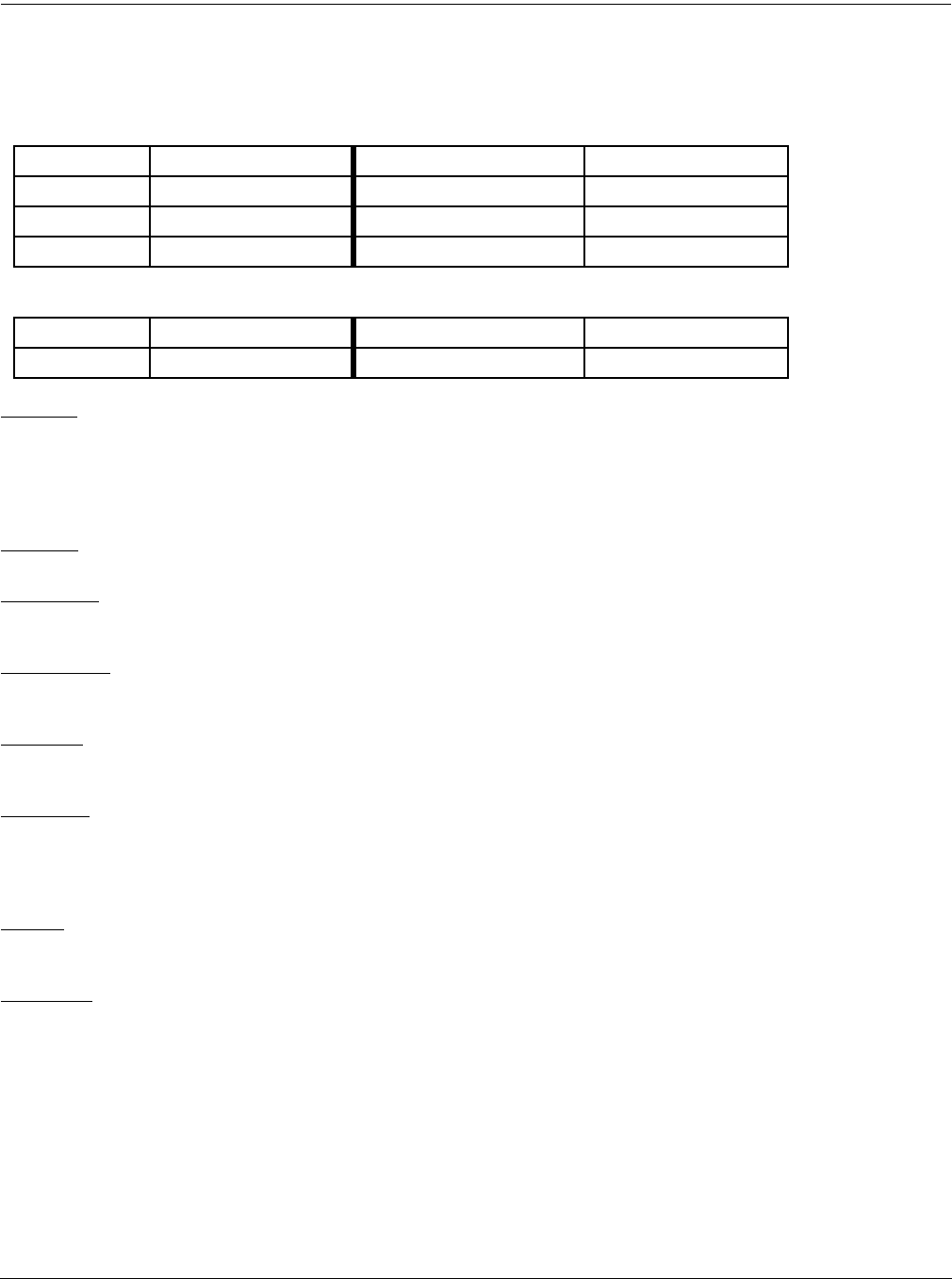User Guide
Table Of Contents
- FXAlg #1: MiniVerb • FXAlg #2: Dual MiniVerb
- FXAlg #3: Gated MiniVerb
- FXAlgs #4-11: Classic • TQ • Diffuse • Omni reverb...
- FXAlg #12: Panaural Room
- FXAlg #13: Stereo Hall
- FXAlg #14: Grand Plate
- FXAlg #15: Finite Verb
- FXAlg #130: Complex Echo
- FXAlg #131: 4-Tap Delay • FXAlg #132: 4-Tap Delay ...
- FXAlg #133: 8-Tap Delay • FXAlg #134: 8-Tap Delay ...
- FXAlg #135: Spectral 4-Tap • FXAlg #136: Spectral ...
- FXAlgs #150–153: Choruses
- FXAlg #154: Flanger 1 • FXAlg #155: Flanger 2
- FX Algs #156-160: Phasers
- Combination Algorithms [“+”]
- Configurable Combination Algorithms [“<>”]
- FXAlg #714: Quantize+Flange
- FXAlg #715: Dual MovDelay • FXAlg #716: Quad MovDe...
- FXAlg #720: MonoPitcher+Chor • FXAlg #721: MonoPit...

FXAlg #12: Panaural Room
Algorithm Reference-22
Parameters:
PAGE 1
PAGE 2
Wet/Dry The amount of the stereo reverberator (wet) signal relative to the original input (dry)
signal to be output. The dry signal is not affected by the Bass Gain control. The wet
signal is affected by the Bass Gain control and by all the other reverberator controls. The
balance between wet and dry signals is an extremely important factor in achieving a
good mix. Emphasizing the wet signal gives the effect of more reverberation and of
greater distance from the source.
Out Gain
The overall output level for the reverberation effect, and controls the level for both the
wet and dry signal paths.
Decay Time The reverberation decay time (mid-band ÒRT
60
Ó), the time required before the
reverberation has died away to 60dB below its ÒrunningÓ level. Adjust decay time
according to the tempo and articulation of the music and to taste.
HF Damping Adjusts lowpass Þlters in the reverberator so that high frequencies die away more
quickly than mid and low frequencies. This shapes the reverberation for a more natural,
more acoustically accurate sound.
Bass Gain Shapes the overall reverberation signalÕs bass content, but does not modify the decay
time. Reduce the bass for a less muddy sound, raise it slightly for a more natural
acoustic effect.
Room Size Choosing an appropriate room size is very important in getting a good reverberation
effect. For impulsive sources, such as percussion instruments or plucked strings,
increase the size setting until discrete early reßections become audible, and then back it
off slightly. For slower, softer music, use the largest size possible. At lower settings,
Room Size leads to coloration, especially if the Decay Time is set too high.
Pre Dly Introducing predelay creates a gap of silence that allows the dry signal to stand out with
greater clarity and intelligibility against the reverberant background. This is especially
helpful with vocal or classical music.
Build Time Similar to predelay, but more complex, larger values of Build Time slow down the
building up of reverberation and can extend the build-up process. Experiment with
Build Time and Build Env and use them to optimize the early details of reverberation. A
Build Time of 0ms and a Build Env of 50% is a good default setting that yields a fast
arriving, maximally dense reverberation.
Wet/Dry 0 to 100%wet Out Gain Off, -79.0 to 24.0
Room Size 1.0 to 16.0 m
Pre Dly 0 to 500 ms Decay Time 0.5 to 100.0 s
HF Damping 16 to 25088 Hz
Bass Gain -15 to 15 dB Build Time 0 to 500 ms
Build Env 0 to 100%










